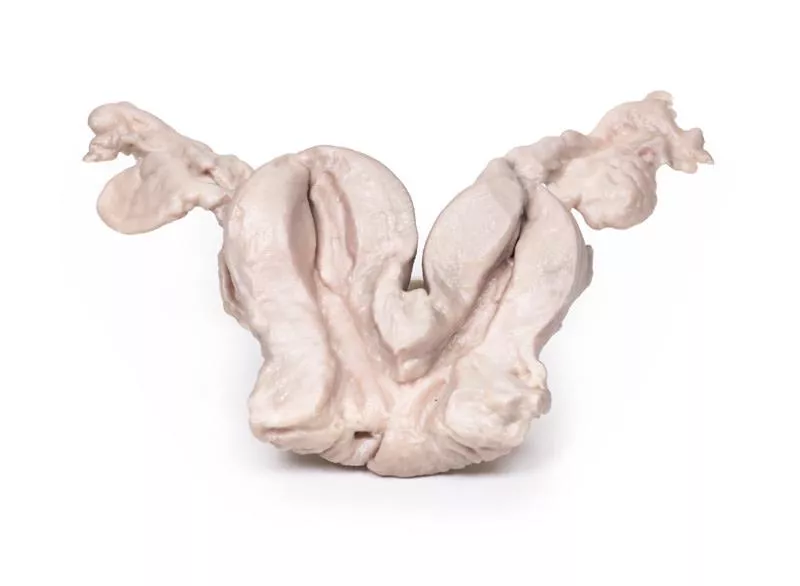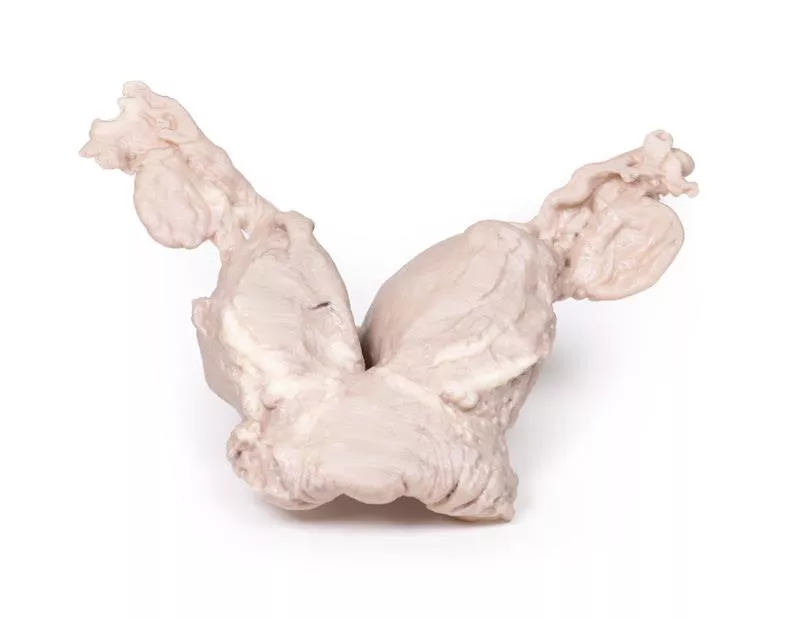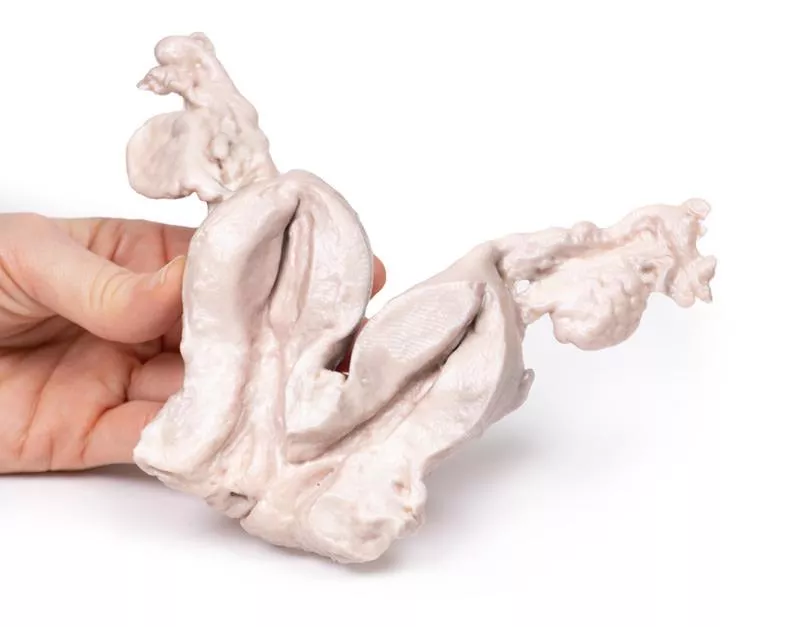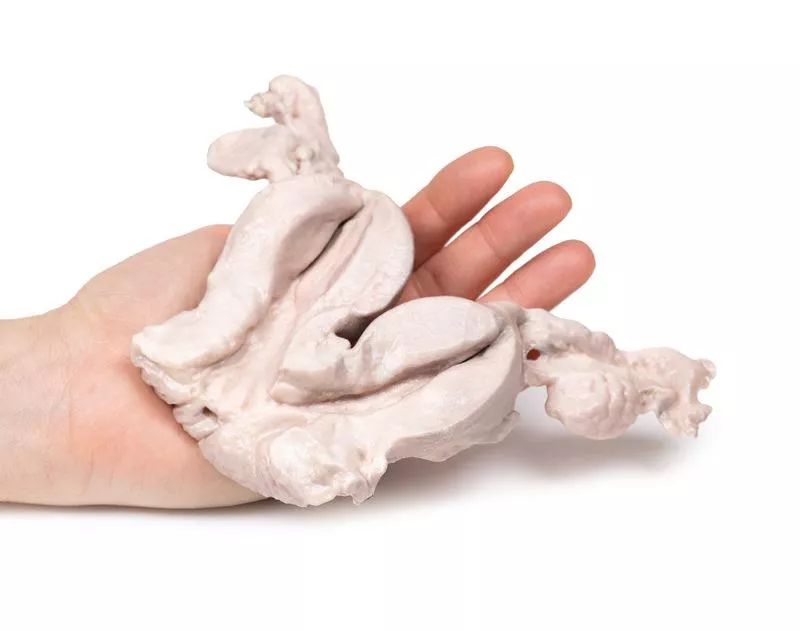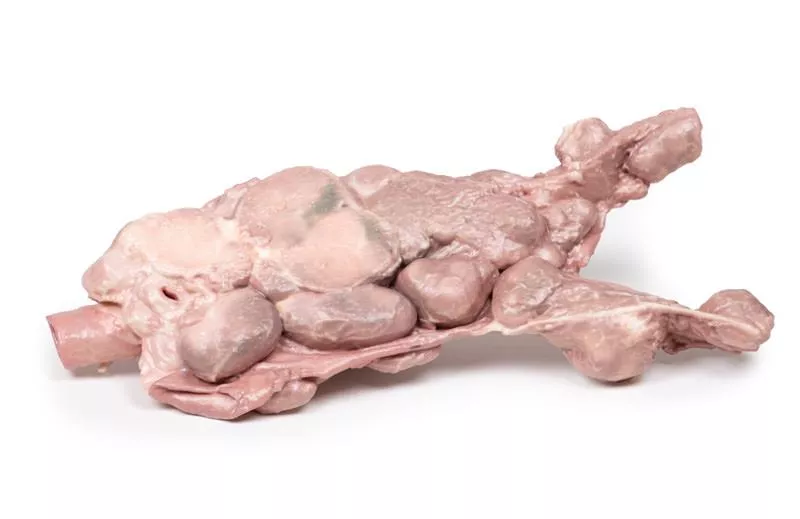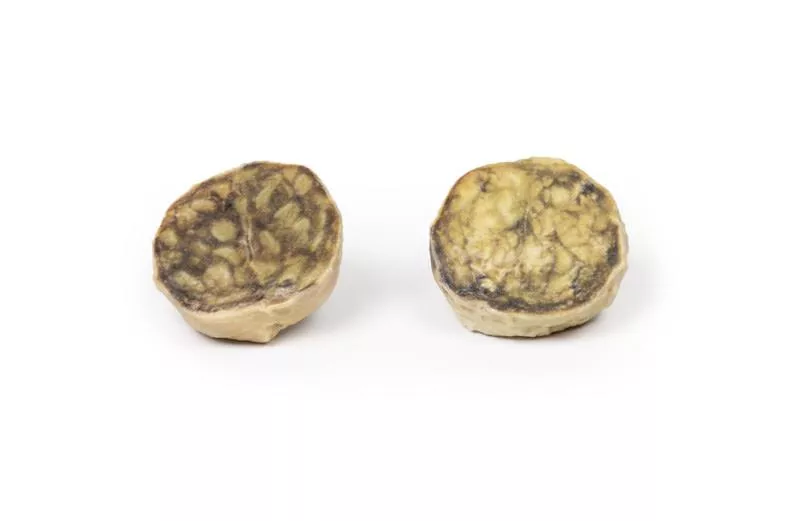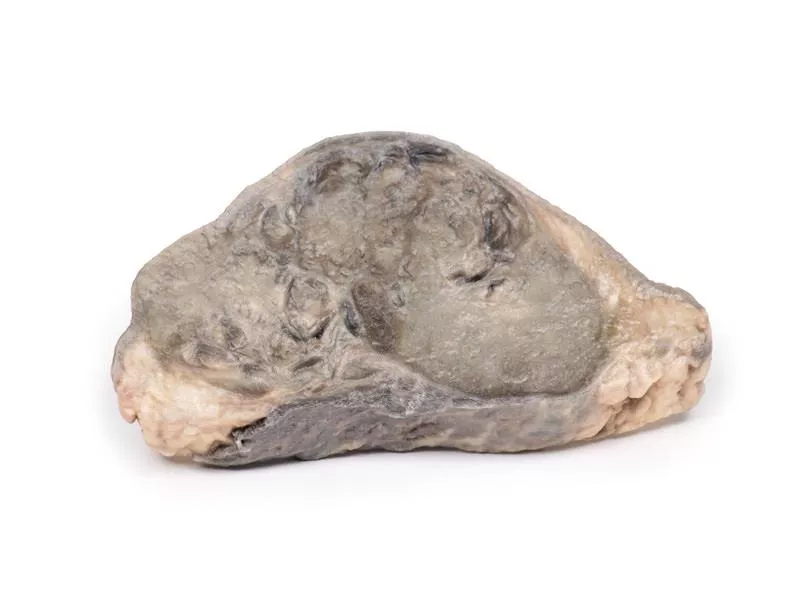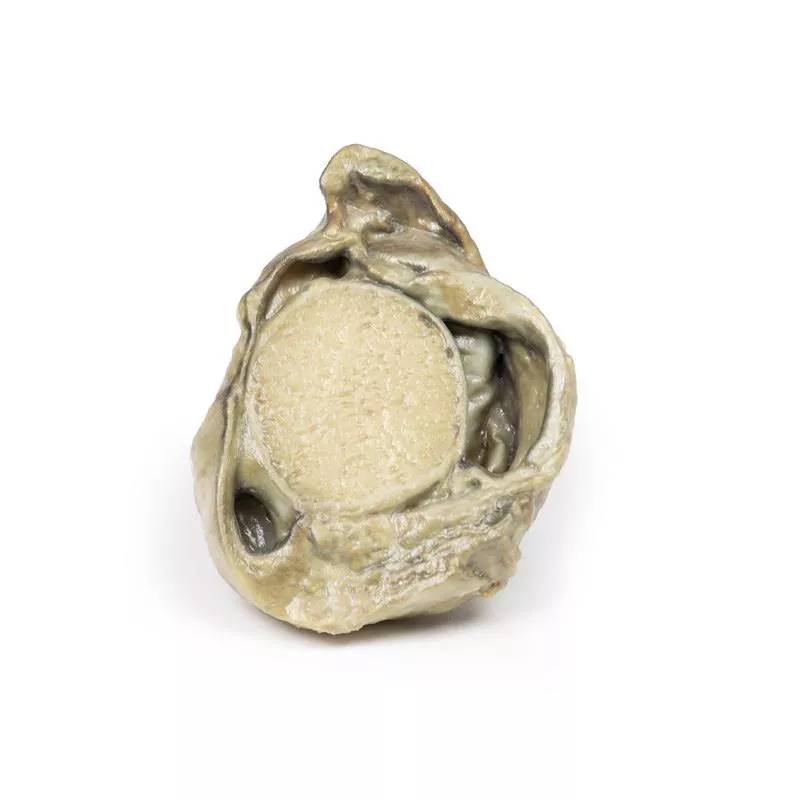Product information "Uterus Bicornuate Unicollis"
Clinical History
A 36-year-old woman experienced a severe postpartum hemorrhage following the breech delivery of her fourth child. All her previous three deliveries were also breech, and there was no history of miscarriage. She had a background of intermittent mild abdominal pain. As the bleeding could not be controlled, the obstetric team performed an emergency radical hysterectomy with bilateral salpingo-oophorectomy. Both mother and child made a full recovery.
Pathology
The specimen includes a bicornuate uterus, fallopian tubes, and ovaries, sliced coronally to show both internal and external surfaces. The two uterine bodies are of equal size and share a single cervical canal. A few small cervical cysts are visible.
Further Information
A bicornuate uterus is a congenital malformation in which the uterine fundus has an indentation greater than 1 cm. While the cervix and vagina are usually normal, the uterus typically contains two partially separated endometrial cavities due to incomplete fusion of the Müllerian ducts during embryonic development.
This condition affects approximately 0.5% of women, though the actual number may be higher, as many are asymptomatic. Symptoms, when present, may include pelvic pain (cyclic or non-cyclic), abnormal bleeding, discharge, or urinary tract infections.
In pregnancy, a bicornuate uterus is associated with increased risk of recurrent miscarriage, preterm labour, fetal malpresentation, growth restriction, and placenta previa. Malpresentation often necessitates a caesarean section. After birth, there is a higher risk of placental retention and postpartum hemorrhage.
Diagnosis is usually made via pelvic ultrasound; MRI may be used in select cases to confirm the diagnosis. Most cases do not require treatment.
A 36-year-old woman experienced a severe postpartum hemorrhage following the breech delivery of her fourth child. All her previous three deliveries were also breech, and there was no history of miscarriage. She had a background of intermittent mild abdominal pain. As the bleeding could not be controlled, the obstetric team performed an emergency radical hysterectomy with bilateral salpingo-oophorectomy. Both mother and child made a full recovery.
Pathology
The specimen includes a bicornuate uterus, fallopian tubes, and ovaries, sliced coronally to show both internal and external surfaces. The two uterine bodies are of equal size and share a single cervical canal. A few small cervical cysts are visible.
Further Information
A bicornuate uterus is a congenital malformation in which the uterine fundus has an indentation greater than 1 cm. While the cervix and vagina are usually normal, the uterus typically contains two partially separated endometrial cavities due to incomplete fusion of the Müllerian ducts during embryonic development.
This condition affects approximately 0.5% of women, though the actual number may be higher, as many are asymptomatic. Symptoms, when present, may include pelvic pain (cyclic or non-cyclic), abnormal bleeding, discharge, or urinary tract infections.
In pregnancy, a bicornuate uterus is associated with increased risk of recurrent miscarriage, preterm labour, fetal malpresentation, growth restriction, and placenta previa. Malpresentation often necessitates a caesarean section. After birth, there is a higher risk of placental retention and postpartum hemorrhage.
Diagnosis is usually made via pelvic ultrasound; MRI may be used in select cases to confirm the diagnosis. Most cases do not require treatment.
Erler-Zimmer
Erler-Zimmer GmbH & Co.KG
Hauptstrasse 27
77886 Lauf
Germany
info@erler-zimmer.de
Achtung! Medizinisches Ausbildungsmaterial, kein Spielzeug. Nicht geeignet für Personen unter 14 Jahren.
Attention! Medical training material, not a toy. Not suitable for persons under 14 years of age.



















